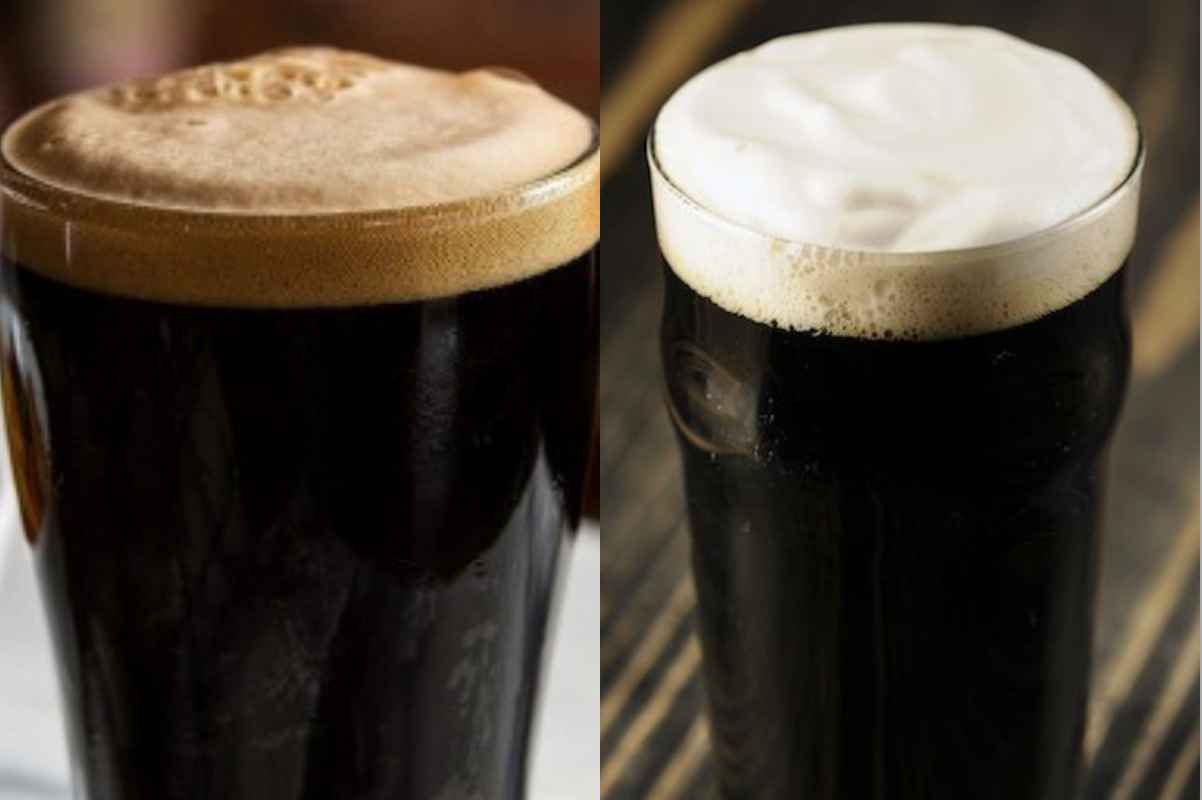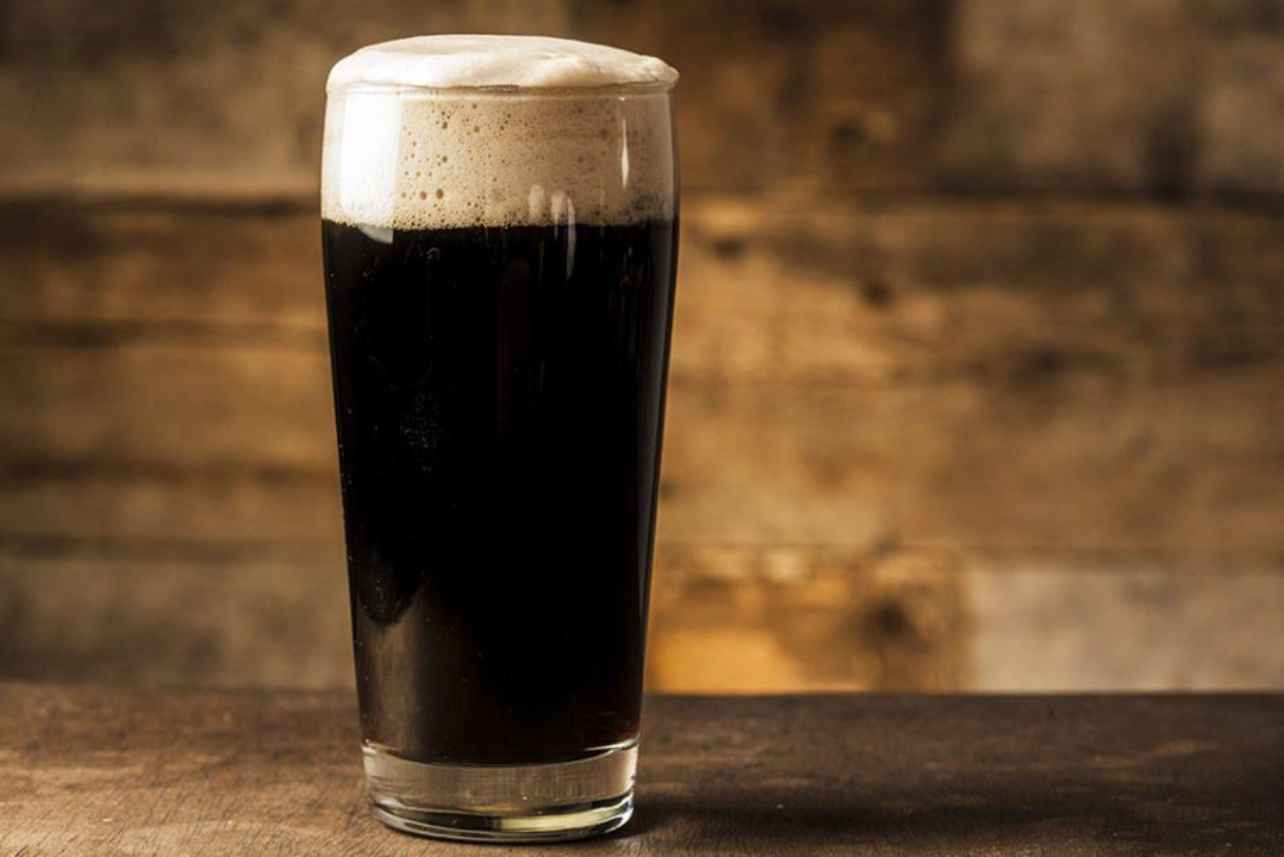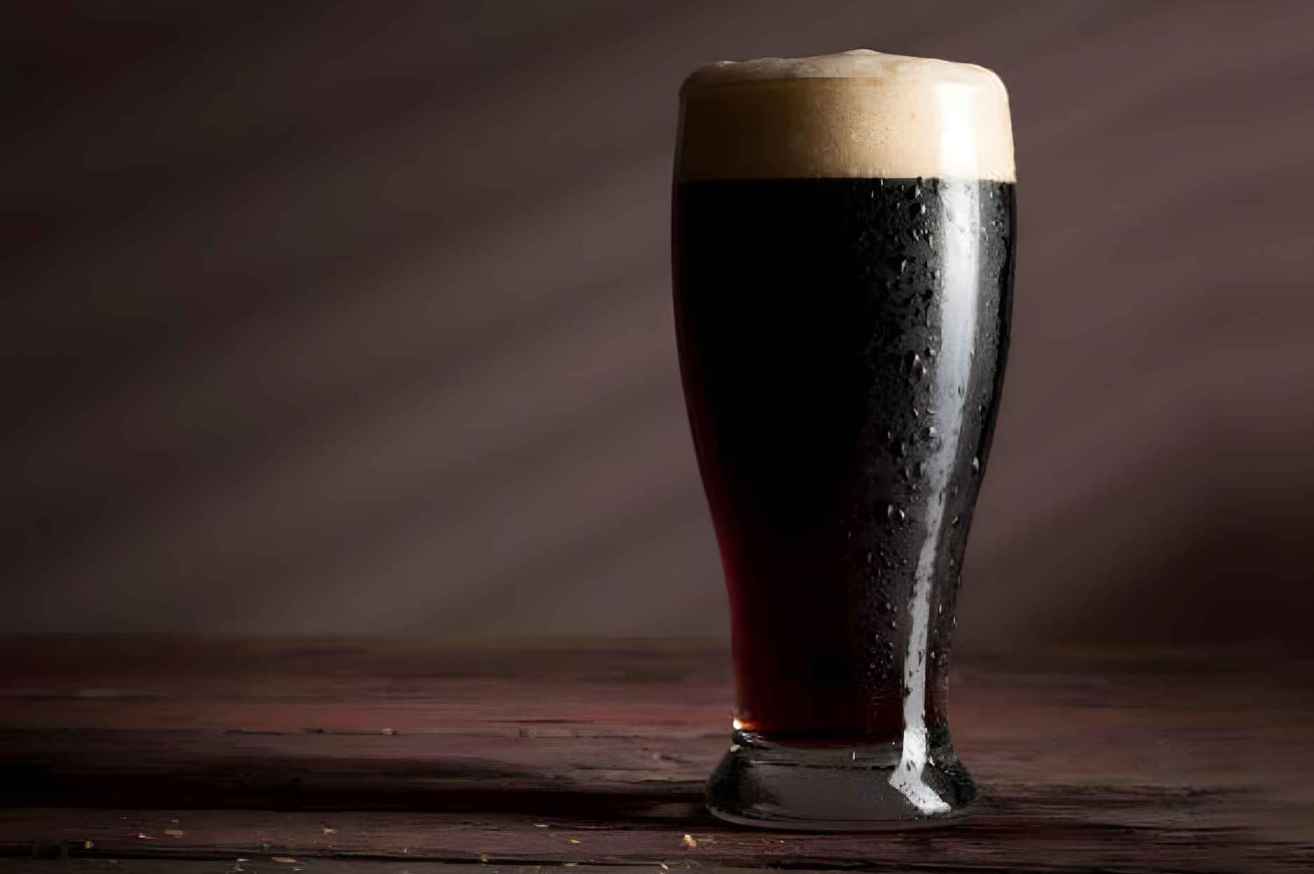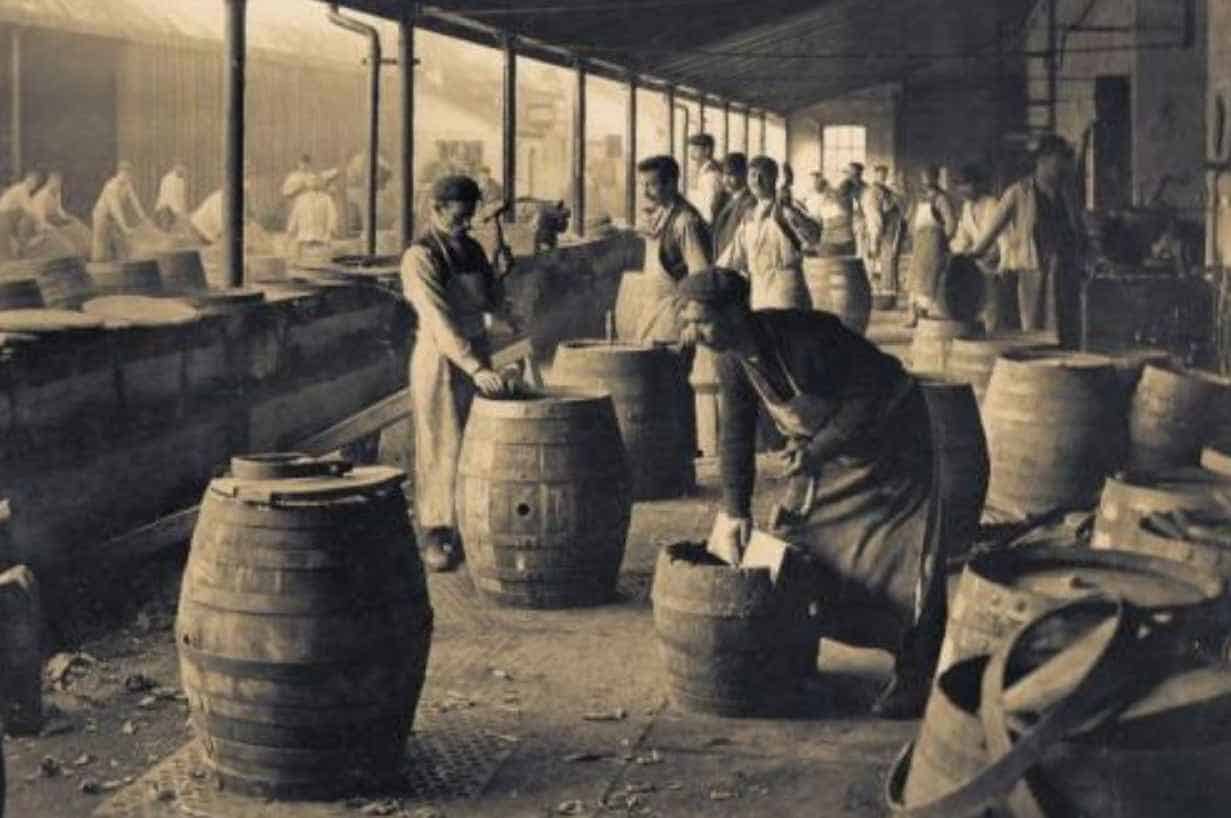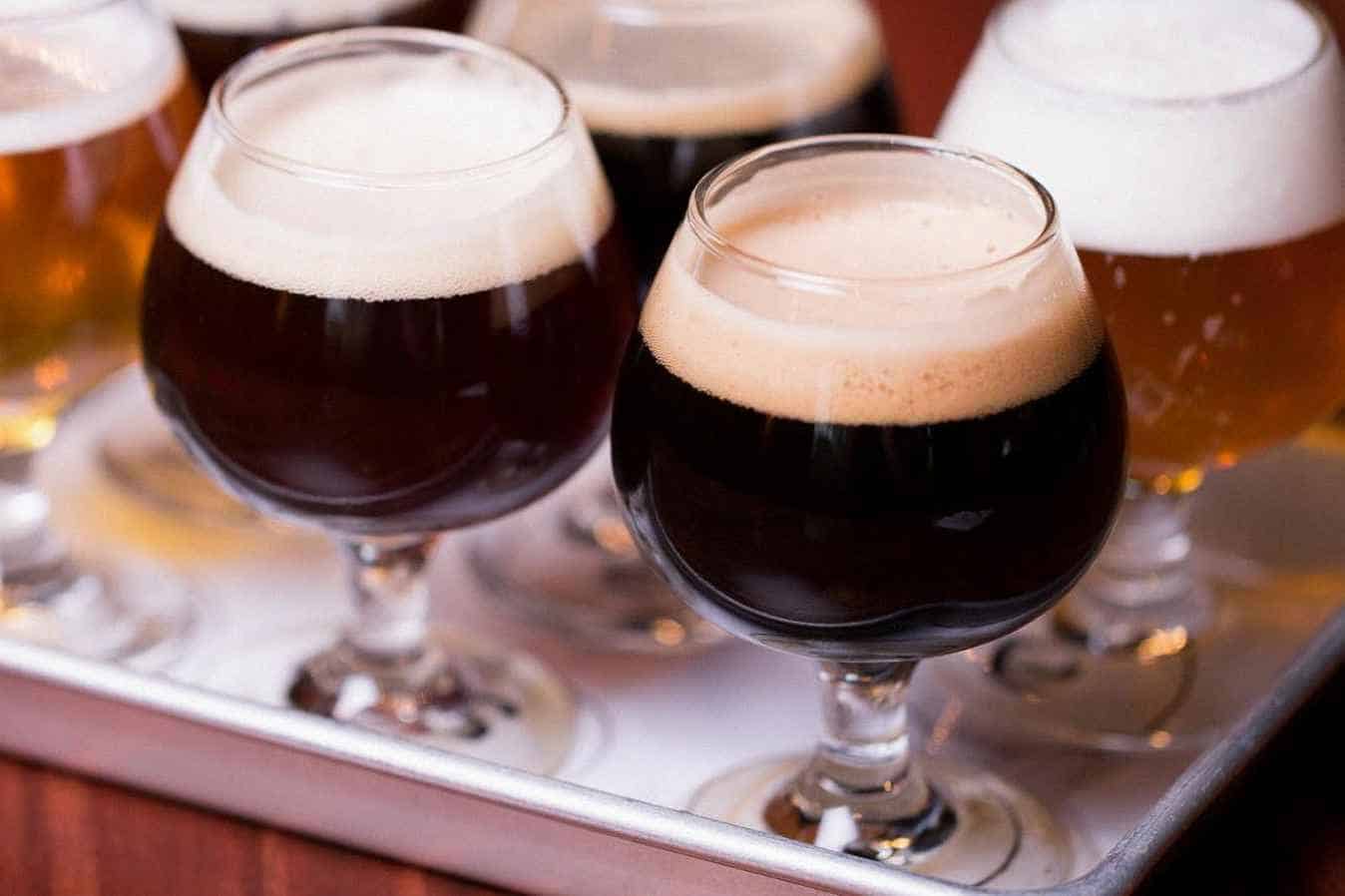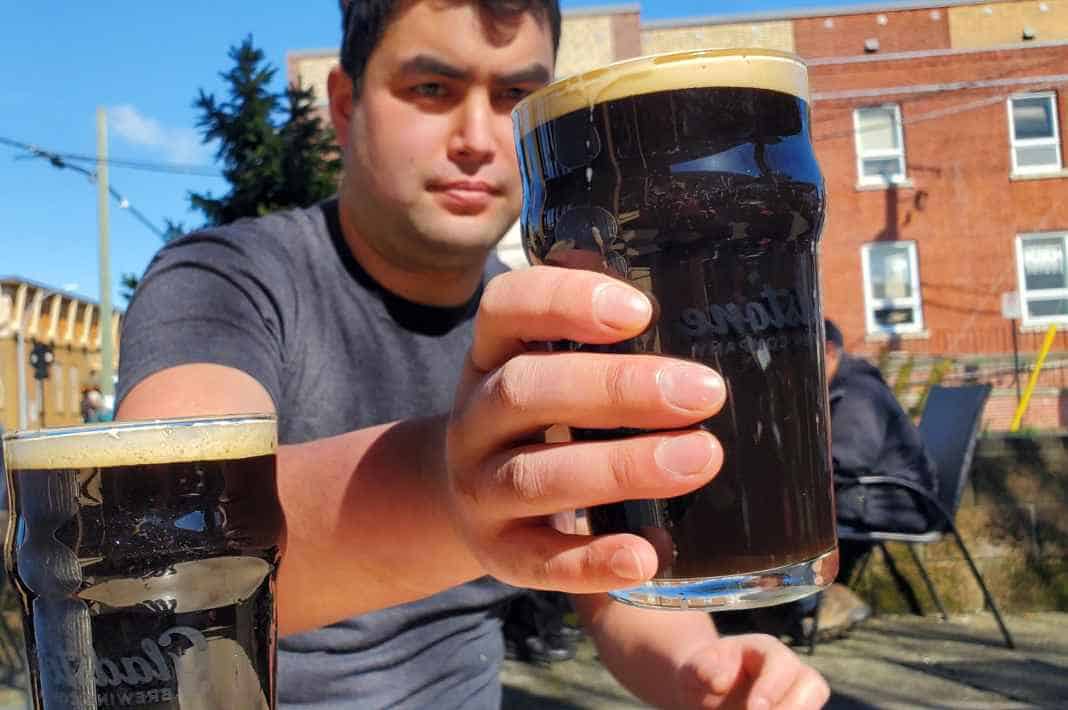At first glance, Porter and Stout may look alike; however, they possess distinctive characteristics that set them apart. In this article, we will uncover the various ways in which Porter vs. Stout differ from one another.
What is Porter?
Porter is an iconic dark beer that roots in the bustling streets and rivers of London, England. First brewed for the Porters, who were among its original patrons, Porter continues to be a staple amongst craft beers today—showcasing roasted malts as one of its defining flavors.
Porter is renowned for its robust taste, originating from where it takes its name after. This full-bodied beer delights the pallet with rich and complex flavor notes such as mocha, toffee, and caramel. However, some blends may have hints of dark fruit like plums or raisins.
No two Porters are the same; depending on which recipe and ingredients the brewery chooses. A Porter can range from having an intense coffee flavor to being more chocolaty or fruity.
By blending a variety of malts, brewers can craft an exquisite flavor profile in their porters. This careful combination results in more complex and sophisticated flavors than could be achieved with one type of malt alone.
Some common types of Porter include:
- Brown Porter: Experience the unique flavor of this smooth, medium-bodied Porter. Chocolate and nutty tones are present without an overwhelming hoppiness or too much alcohol content—a perfect way to enjoy after dinner.
- Robust Porter: This robust Porter features a distinct hop-forward flavor and bolder taste, with a higher ABV than its brown counterpart.
- Baltic Porter: This particular Porter stands out for its bold, malty flavor and elevated alcohol content. It’s brewed with lager yeast and fermented at lower temperatures than typical.
- Dry Porter: This Porter is brewed with a specialized yeast that gives it an unmistakably dry and crisp finish. It has a well-rounded flavor and lower alcohol content.
What is Stout?
When it comes to sublime flavor, few beers can compare with the robustness of Stout. This dark beer is a masterpiece created from roasted malt or barley, hops, water, and yeast—each element adding its own unique dimension.
Enjoy rich tastes reminiscent of chocolate, coffee beans, and caramel, with subtle notes of bitterness from hops and hints of fruit or spice. An exquisite palette awaits you in every sip!
Depending on the recipe and ingredients used, stouts can offer a variety of flavor notes. It can range from prominent roasted elements to chocolatey or coffee-like nuances. Every Stout is distinct in its own way, providing connoisseurs with an array of delightful experiences.
There are many different styles of stout, such as:
- Irish Stout or Dry Stout: Dry Stout is widely recognized as the most sought-after Stout blend. It has a distinct taste and mouthfeel that screams coffee-like flavors with each sip and boasts an alluring creamy head of foam on top.
- Sweet Stout, Cream Stout, or Milk Stout: This Stout is infused with lactose—a sugar extracted from milk. It provides the beer with a higher sweetness and a luxurious creamy texture.
- Oatmeal Stout: Enjoy a unique stout crafted with care and comprised of oats in the grain bill. The result? An exquisitely smooth texture and nutty flavor.
- Imperial Stout or Russian Stout: With its high alcohol content and robust flavor, this full-bodied Stout is impossible to ignore. Its complexity further enhances with barrel aging that provides a unique depth of taste.
History of Porter and Stout
Deriving its name from the street and river porters of London, England, in the 18th century, Porter beer has become a beloved style renowned across all social classes. From its humble origins among the city’s working class to become one of today’s most popular beers worldwide, this full-bodied ale is sure to please any palate.
Porter is a fusion of three beers: brown, mild, and old ales. Blending the different varieties creates an extraordinary beer with more uniform flavor and alcohol content than any single one could provide on its own.
This delectable blend also has an iconic dark color attributed to heavily-toasted malts. To put it simply, Porter stands out for all the right reasons!
In contrast to Porter, Stout is a more robust beverage first brewed in London during the 19th century. The term “stout” was used to classify the stronger versions of Porter from its weaker counterparts that were more preferred at the time.
Arthur Guinness founded his brewery in 1759 and began brewing Porter before introducing their signature stout. In the 19th century, both of these beer styles became incredibly popular worldwide. Yet, with pale lagers emerging as a favorite choice during the 20th century, Porter and Stout no longer dominate beverages across continents.
Yet, in the 21st century, Porter and Stout have made a remarkable comeback because of the craft beer trend. It has resulted in more people appreciating traditional beer styles like Porter and stout.
With the numerous Porter and Stout styles available today, finding a beer that suits your preferences has never been easier. It even ranges from conventional recipes to innovative creations.
Porter vs. Stout: The Similarities
Porter and Stout are both savory, dark-hued brews that share many elements together. Both boast robust flavors and a satisfyingly full body. Here are other similarities you should know about the pair:
- Both Porter and Stout are made using roasted grain (barley or malt), which gives the beer its dark color and characteristic rich, roasty flavors.
- Both styles are often described as having flavors of coffee, chocolate, and dark fruit.
- They both have similar ABV ranges (usually between 4-8%).
- Both Porter and Stout are considered dark beers. They are both usually opaque, with a color that ranges from light brown to black.
- Both Porter and Stout are associated with strong and robust flavors. This is why they tend to be taken for one another.
Porter vs. Stout: The Differences
| Beer Type | Porter | Stout |
| Color | 19 to 40 SRM | 25-40 SRM |
| Grains Used | Roaster Barley | Roasted Malt |
| Flavor Notes | · Chocolate
· Mocha · Coffee |
· Roasted Coffee
· Malt · Caramel |
Porter and Stout are both types of dark beer, but they have some differences in their flavor profiles and brewing methods.
Porter is brewed using malts that are roasted to a deep, dark hue giving it a vibrant flavor with notes of chocolate and coffee. Its body is medium-full, with carbonation low-to-moderate creating a smooth, creamy texture.
Stout stands out from Porter as it is more robust in body and flavor. Its stronger, roasted taste comes from a higher ratio of roasted malt that adds distinct hints of chocolate, coffee, grains – even sweet or fruity notes.
In general, Porter is typically seen as an accessible and light-bodied dark beer, while Stout has a more robust and intense taste. Much like their taste, Porter tends to be lighter in color than Stout. Depending on the amount of malt present, they can be a lot darker and
Which is Better: Porter vs. Stout?
To summarize the answer to the question—it all depends on your preference. If you want a darker and more bitter drink, then Stout is the one for you. However, if lighter flavors are what you prefer, then the Porter is a better option.
Best Way to Drink Porter and Stout
Porter and Stout are two exquisite beer varieties that taste best when served at an ideal cellar temperature of around 50⁰F to 55⁰F. To truly capture the flavor and enjoy its aroma, these beers should be poured into glasses like a tulip or pint glass—allowing for an excellent head.
For the best drinking experience, gently tip your glass and pour your beer slowly to create a thick foam head. To savor the intricacies of its taste and aroma, take small sips rather than gulping it all down in one go.
Porter and Stout are both dark beers with robust flavors, so they pair well with rich, hearty dishes. Here are some food pairing suggestions for Porter and Stout:
- Porter: BBQ ribs, grilled steak, chocolate desserts, sharp cheddar cheese.
- Stout: Beef and Guinness pie, oysters, chocolate truffles, blue cheese.
In general, both Porter and Stout go well with:
- Roasted meats (beef, pork, lamb)
- Stews
- Chilis
- Barbecue Dishes
- Hearty Casseroles
- Chocolate Desserts
- Sharp Cheeses (Cheddar, Gouda, and Blue Cheese)
Keep in mind that the bitterness of beer could play a role too. Stouts can be bitter and sweet, depending on the type, meaning you can get a better pairing with sweet or salty food. Porters are generally less bitter; they could match nicely with various dishes with some sweetness.
In Summary
This article will provide you with all of the necessary resources to determine whether Porter vs. Stout is more suited to your unique preferences and desires. There’s something here that everyone can find helpful, no matter which specific type of beer you prefer!

Sandra B. King is a wife and mother of two. The marketing genius is also a beer enthusiast. Even though she doesn’t brew beers, she can whip up a mean content marketing strategy.
